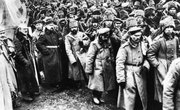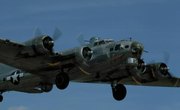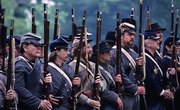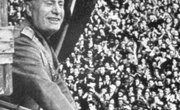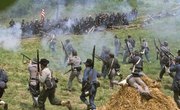It is difficult for those unfamiliar with the heat of military battle to comprehend fully just how precarious the odds of success or defeat are. The slightest advantage or disadvantage can change the course of history. Such was the case at the Battle of Shiloh from April 6-7, 1862, the second year of the American Civil War. Shiloh Church, located in Tennessee, was the site of a battle that, with a Confederate victory, could have led to the South's eventual invasion of the North. That eventuality never occurred because of some events that worked in the favor of the Union, or Northern, troops.
General Johnston Killed
Jefferson Davis, the president of the Confederacy, considered Gen. Albert Sidney Johnston the top military commander in the South. Johnston began the attack on April 6 but received a fatal wound in the afternoon. Ironically, Johnston’s gunshot wound was not necessarily life threatening, but he had sent the doctor away to aid needy Union and Confederate troops. The result was that Gen. P.T.G. Beauregard assumed command. Though he initially continued fighting, Beauregard decided not to complete the charge until the next day. This decision would be the saving grace for the devastated Union Army because 25,000 reinforcements arrived overnight.
Weather
The attack by the Confederates on the unprepared, unsuspecting Union troops could have begun on Saturday, April 5. Heavy rain that day caused a delay until Sunday, April 6. This delay bought the Union time for reinforcements to reach the battlefield. Without this advantage in numbers, the Union may well have lost the battle.
Hornet’s Nest
Gen. Ulysses S. Grant commanded the Union Army in the area. He and Gen. William T. Sherman did not suspect a Confederate attack. In fact, the troops had not prepared any protective fortifications. The lack of preparation almost cost the Union the battle; however, the initial Confederate attack on April 6 failed to maintain its momentum. After a few hours of charging, the Confederate offensive reached an impasse. Union troops caught off guard by the attack had retreated to the woods, in an area known as the Hornet’s Nest, and there mounted a defense out of desperation. Lasting a few fours, the fighting at the Hornet’s Nest, though ending in a Confederate victory, provided the Union Army the time it needed to prepare for a sustained battle over the next day. Furthermore, it was during this stalemate at the Hornet’s Nest that Johnston, leading the Confederate forces, received his mortal injury.
Superior Numbers
Ultimately, the North would win the Civil War largely because it outnumbered the South in terms of troops. The same was true in the Battle of Shiloh. With 23,746 casualties, who had more soldiers mattered. With 25,000 troops arriving to fight on the last day, the Union had a total strength of 65,085. Meanwhile, the Confederate Army mustered a relatively low 44,968 troops.
Related Articles
References
Resources
Writer Bio
David Kenneth has a Ph.D. in history. His work has been published in "The Journal of Southern History," "The Georgia Historical Quarterly," "The Southern Historian," "The Journal of Mississippi History" and "The Oxford University Companion to American Law." Kenneth has been working as a writer since 1999.




